Architect custom -> Builder Custom -> Semi Custom -> Tract
just_janni
6 years ago
Featured Answer
Comments (58)
just_janni
6 years agoRelated Discussions
IKEA in Semi-custom and Custom Homes
Comments (37)Interesting thread! We built our home 15 years ago and had custom built (and I mean a single guy built them himself) cabinets throughout the house. All solid wood. Book matched. No stain--let the natural beauty of the wood show!. Maple in the kitchen. Cherry in the bar area. Walnut in the kitchenette in the lower level. They are beautiful, no doubt. My husband is a hobbyist woodworker and is a total SNOB about cabinetry. Then we bought a vacation/retirement home in northern CA a couple of years ago. Renovating it now. Here's how I looked at it. - The boxes for the kitchen cabs need to be solid, well built - If I get frameless boxes, I have the choice of changing the doors if I want something different down the road - I want a decent amount of options for designing the space, but I have long ago decided that I never will be a professional cook, and I don't need every single design feature (those of you who cook a ton deserve those clever design details!). - I wanted high end finishes (counter and backsplash in particular). - We have to spend a lot of money on the rest of the renovation and I didn't want to spend so much on the kitchen that I limited what we spent on other areas. So, we looked at IKEA. Don't be scared by the furniture. The cabinets are totally different. When we looked at what we could pay for IKEA cabs relative to other cabinet manufacturers, it was easy to say yes. We considered custom doors, but in the end we decided to do the doors with IKEA too. DH and I assembled and hung a lot of them. He is VERY handy, and he has said many times that it's all about the installation if you are DIY. We found a local former cabinet maker to finish the installation (we had to travel back home). Interesting thing is this guy, who is an amazing cabinet maker, said he can't stay in business doing cabinets any longer because he just can't compete with IKEA (this may be more true in CA than other parts of the country). Now, when I compare the kitchen in both homes, one doesn't feel more "high end" than the other. They are simply very different. Both look custom built. When we sell our current home, will 90% of the buyers out there realize the quality of our cabinets? Nope. I'm sure someone will walk in and say "I can't wait to paint these wood cabinets white". LOL! I will say that working with IKEA is easiest if there is one near you. The people in the stores seem to be very knowledgeable and eager to help. During their kitchen sales it is busy, so go on a Tuesday or Weds. And there is a learning curve when it comes to ordering. What made our process a PIA was doing it from a distance. I won't go into the gory details! Good luck with your decision!...See MoreNew Build Semi Custom Home Finishes
Comments (17)It is a Toll Brother's house. So I suppose one could call it a tract home. There's a lot of customization they allow for, in addition to all the different options they already have available. Not quite your no substitution Chinese menu. :-) And we were invited to basically go by the site daily if we wanted to monitor the construction. But I'm also new to this, so major things like missing outlets, or a standard outlet vs the outlet we paid for I catch. Other things I appreciate advice on knowing whether it is an issue, something not to worry about, etc. We don't own the land. We picked a lot, and one of the available floor plans, then made changes that we wanted to the floor plan, picked finishes, flooring, paint, electrical, etc. I don't think I have a photo of the master bathroom tile that shows them being offset slightly from the grid. And from a distance, I probably isn't noticeable. The face plates on the outlets I suppose depends on the persons eye. I noticed it, but it doesn't appear to be off enough that a bubble on a level would not be "centered". So as mentioned those items probably not worth dying on a hill over. Maybe not even worth mentioning. I do have pictures of the asymmetrical outlets. That one may be a hill worth dying on for my wife and me. The first photo would be the "East" wall or one on the left and the second photo is the "West" or right side. Someone else pointed out I should check the fuse box to see if we ended up with GFI circuit breakers, since as far as I remember, there is not a single GFI outlet in the house. As for the 3x3 grid of lights, without getting up there with a tape measure, not sure a picture would do any good. Could just be an optical illusion. Anyway, I appreciate everyone's input so far. Thank you....See MoreCustom Home Builder in Upstate SC
Comments (16)If you are a retired trade, so as to be able spend all your time on the job, and have good industry connections, then yes, it's possible to save money. Even then, the upgrade temptations can sabotage budgets. Most people "save" virtually nothing by being an OB. They spend more to do many things than a GC will. They then use up any actual savings by upgrading things Consider the really extended timeline paying that extra interest before being able to convert from a construction to perm. Add in the conflict of how long the bank will actually let a construction mortgage be open. They have deadlines. Deadlines that are difficult to meet unless the job is full time and you have experience. Also consider that even experienced GC's are having big labor shortages and can't get work done right now. Subs have no incentive to either give you any discount on pricing, or to show up to your job. The contractor that gives them 300K worth of work will always come first. He'll blow you off in a heartbeat. Now you've got a runaway snowball going downhill for everything that comes after. You have to know how to make adjustments and second choices....See MoreCustom/Spec Builder
Comments (15)Very simply, you've found a builder that is sort of a mid-range production model. If you're OK with that, willing to live with his "packages" and aware that you will have less control (make sure you get costs of any upgrades you want IN WRITING right now), then fine. If you're not, search on for another builder. Keep in mind that it's possible a fully custom builder who IS willing to delete those items you feel you don't need may not end up being less expensive. A builder that is doing packages is saving up front on buying certain items in large quantities. That's why removing them doesn't save YOU that much - they aren't costing him that much and so you don't get the full retail price difference between those items for not using them. Calling himself a "custom" builder is certainly stretching the terminology here. It's not that custom builders don't do spec houses - they do. Mine occasionally will do a spec house when he has time on his hands, found a super handy lot, or just has something he wants to try. OTOH, he never builds the same house twice, either. True custom pretty much means every house is a proto-type. Since the builder has never done THAT house before, either, it's harder to be specific about what it will cost or foresee the little quirky things that will happen. Hence, why they're more expensive....See Morejust_janni
6 years agojust_janni
6 years agobry911
6 years agolast modified: 6 years agomushcreek
6 years agoDavid Cary
6 years agoNajeebah
6 years agoNajeebah
6 years agoNajeebah
6 years agoDenita
6 years agolast modified: 6 years agoNajeebah
6 years agojust_janni
6 years agoVirgil Carter Fine Art
6 years agoDenita
6 years agobry911
6 years agolast modified: 6 years agoNajeebah
6 years agobry911
6 years agolast modified: 6 years agoNajeebah
6 years agobry911
6 years agolast modified: 6 years agoSummit Studio Architects
6 years agobry911
6 years agobry911
6 years agolast modified: 6 years agochispa
6 years agolast modified: 6 years agojust_janni
6 years agobry911
6 years agolast modified: 6 years agoNajeebah
6 years agojust_janni
6 years agostrategery
6 years agoVirgil Carter Fine Art
6 years ago
Related Stories
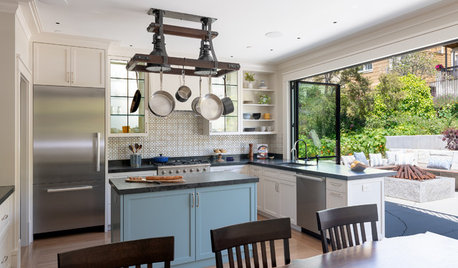
TRANSITIONAL HOMESHouzz Tour: Builder Customizes Old House for Modern Family Life
Special touches like indoor-outdoor bar stools, an outdoor kitchen and a rope loft mark this San Francisco home
Full Story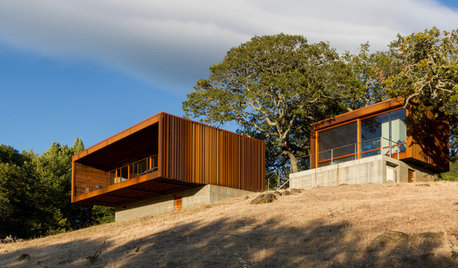
HOUZZ TOURSHouzz Tour: Customized Prefabs Nestled in a California Hillside
Luxe finishes and custom features personalize a family’s Sonoma County weekend home with spectacular views
Full Story
KITCHEN DESIGNHow 3 Design Pros Customized Their Own Kitchens
These designers chose palettes, materials and layouts tailored to their personal tastes and lifestyles
Full Story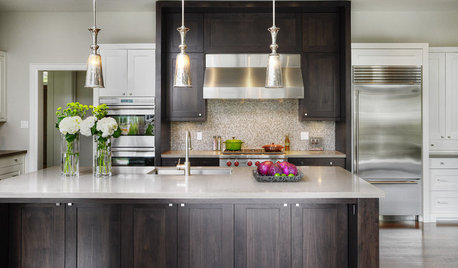
WORKING WITH PROSWhat to Know About Working With a Custom Cabinetmaker
Learn the benefits of going custom, along with possible projects, cabinetmakers’ pricing structures and more
Full Story
TINY HOUSESHouzz Tour: A Custom-Made Tiny House for Skiing and Hiking
Ethan Waldman quit his job, left his large house and spent $42,000 to build a 200-square-foot home that costs him $100 a month to live in
Full Story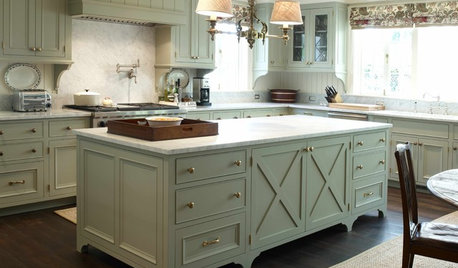
KITCHEN CABINETS8 Cabinetry Details to Create Custom Kitchen Style
Take a basic kitchen up a notch with decorative add-ons that give cabinets a high-end look
Full Story
DECORATING GUIDES6 Cost-Effective Ways to Go Custom Made
Get a look that’s totally you — and possibly for a lower cost than you might think
Full Story
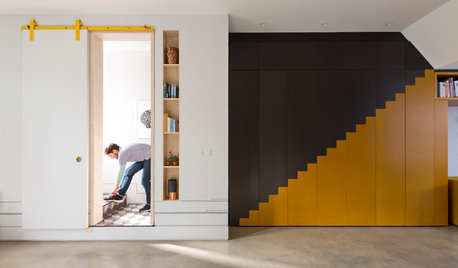
THE ART OF ARCHITECTURE7 Eye-Catching Custom Storage Ideas
Need more space to stash your stuff? Get inspired by these clever ideas for built-in storage
Full Story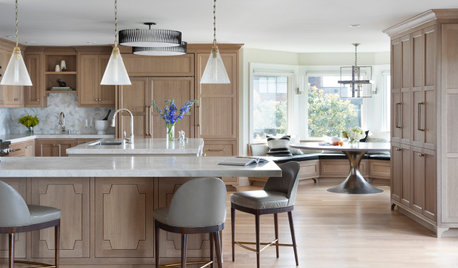
DESIGN DETAILSWhy Custom Furnishings and Cabinets Are Worth the Cost
An experienced designer shares 4 reasons to consider made-to-order designs
Full Story





Mark Bischak, Architect